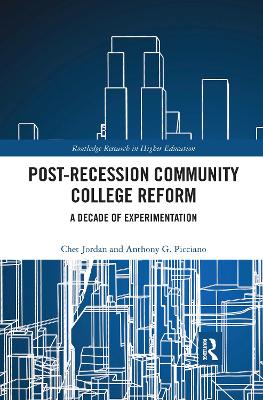Routledge Research in Higher Education
2 total works
The book analyses and evaluates several key community college reform programs that emerged after the Recession of 2008 and as a result of major initiatives in California, New York, Tennessee, Florida, Connecticut and Wisconsin.
Because of the economic downturn in the early 21st Century, an already eroding financial base for public higher education saw even further losses. At the same time, enrollments were booming, particularly in the two-year sector where many students who would have traditionally forgone a college education, were now enrolling to ensure their competitiveness in a harsh labor market. Chapters in this book examine the development and implementation of initiatives and accountability measures imposed across the states by the Obama administration, and consider their effectiveness in reducing the impact of the loss of students, and their role in improving courses.
This book will be of interest to postgraduates and researchers exploring the history of education in the United States, as well as academic administrators, faculty, and policy-makers with an interest in reform-based practices that have been successfully implemented in community colleges.
Establishing an Experimental Community College in the United States
by Chet Jordan
This text offers an in-depth case study of the development of an experimental community college established by City University of New York with the aim of increasing two-year completion rates. By detailing academic and administrative reforms undertaken at Guttman Community College since 2007, the text illustrates the implementation of innovative practices in developmental education, advising, and experiential education and offers critical commentary on why reforms failed to bring the expected results.
In a series of comprehensive and insightful chapters, Jordan maps the process of implementation and reform at Guttman Community College. In doing so, he explores the shortcomings of the Guttman enterprise, and offers in-depth analysis of the causes and implications of a failure to account for the local context and student population in planning and implementation phases. This unique, historical narrative thus offers important insights into pitfalls and best practices around issues of racial inequity, governance and leadership, curriculum development, student support services, and data-driven decision making. Each chapter concludes with a section focusing specifically on implications for the post-secondary system more broadly to inform effective, appropriate, and inclusive college reform.
This book will be of interest to postgraduates and researchers exploring the history and governance of postsecondary education in the United States, as well as academic administrators, faculty, and policymakers. Jordan speaks to the myriad lessons that can be valuable for a higher education landscape that is hungry for innovation and reform.

